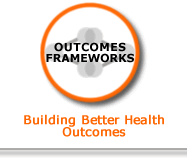| |
Rationale
Greenspace
Improved satisfaction with environment and improved physical environment
Safety
Violence
Greenspace
There is evidence of an association between access to nature, green or open spaces and better mental health. Benefits include both improved psychological wellbeing; increased life satisfaction, self-esteem, self-confidence and positive mood states as well as reduced anxiety and stress. Wider impacts include reduced negative social behaviours such as crime, violence and other incivilities and increased physical activity and social interaction.[1]
Improved satisfaction with environment and improved physical environment
There is growing evidence that characteristics of the built environment including housing quality, crowding, air quality and type of dwelling can have a direct effect on mental health outcomes as well as indirectly effect them through psychosocial processes. Research also highlights the potential importance of valued ‘escape facilities’, safety on the streets, neighbourhood quality, noise and spatial density (home and neighbourhood) and social fragmentation. Survey data from Scotland has shown that how people perceive their environment is associated with their physical and mental health and that people with above average mental wellbeing tend to be more positive about their environment than those with below average mental wellbeing. Significant methodological limitations mean that it is difficult to demonstrate the precise nature of the relationship between the physical environment and mental health outcomes.[1]
Safety
Both actual and perceived safety are associated with mental health outcomes including stress and mental health problems and can effect the quality of people’s lives by causing social exclusion as well as mental distress.1 Living in an unsafe area has also been shown to reduce life satisfaction. [2]
Violence
Both witnessing and experiencing violence (physical and psychological) across the lifespan are associated with poor mental health outcomes.[1] For example women who experience interpersonal violence have higher rates of mental health problems and chemical dependence and are at heightened risk for suicidal behaviour and self harm.[3]
Source
-
Parkinson J (2007). Establishing a core set of national, sustainable mental health indicators for adults in Scotland: Final report. NHS Health Scotland: Glasgow.
-
Dolan, P., Peasgood, T. & White, M. (2006). Review of research on the influence on personal well-being and application to police making. Defra: London.
-
Krug E F, Dehlberg, LL, Mercy JA , Zwi AB & Lozano R (Eds) (2002). World report on violence and health. World Health Organization: Geneva
|



